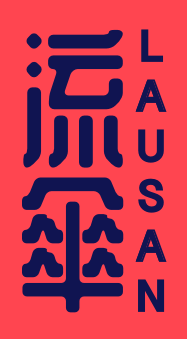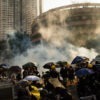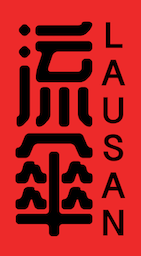Original: 【基層工人去咗邊:與工會幹事談基層動員】, published in Squatting 蹲點
Translators: Lola, flinker_spatz_3
This article has been edited for clarity and precision. If you would like to be involved in our translation work, please get in touch here.
Interviewer’s note: Though blue-collar workers make up the majority of the city’s inhabitants, their role in the Hong Kong uprising has yet been recognized. Their invisibility in the public eye is troubling, but it is undeniable that they, too, have an enormous stake in the ongoing movement. Their involvement in the protests—and consequently appearances in the courthouse—has been apparent. At the same time, blue-collar workers shoulder the burden of the fallout on the ground. From removing shards of glass and debris after a pro-establishment business is vandalized and cleaning up roadside garbage after protests, to bearing with unemployment and new challenges to their livelihood, these workers have become collateral damage in a movement in which they themselves participate.
What do they think about the protests as a whole, and how have they come to understand the “pro-democracy” movement? How do grassroots organizers begin to address the discrepancies between the demands of the movement and the lived experience of blue-collar workers?
We speak to Denny To, staff organizer of the Sanitation Workers’ Union and Hong Kong Confederation of Trade Unions (HKCTU) and a former worker at the League of Social Democrats, about the anti-extradition movement and the harsh realities some of its participants face.
Blue-collar workers neither support the government nor the actions of some protestors
Blue-collar workers have struggled to keep up with the movement since its very onset. When it first erupted last June, the first thing I thought about was not how it would affect my job, but rather what it means for my relationship to Hong Kong society. Along with many young people, I helped to mobilize participation in demonstrations and tried to make a difference that way. At the time, emotions were running high for many of us.
As the protests went on, it became clear to me that my biggest contribution to the movement was no longer confined to the streets. I had started out as an activist in the long tradition of Hong Kong’s mass movements, but as the months went by, I felt increasingly left behind by the current uprising. That got me thinking: what is my actual role here? Deepening my involvement as a union organizer was the inevitable conclusion.
At the time, no one thought of blue-collar workers as integral to the movement. But as the protests intensified and brought with them extensive blockading practices and major road disruptions, sanitation workers became heavily impacted. While most of Hong Kong probably turned “yellow” (denoting the pro-democracy camp) after last July, where did people like street cleaners and manual laborers fit into all this?
How do organizers begin to address the discrepancies between the demands of the movement and the lived experience of grassroots workers?
This is why I spent a lot of time conducting a survey with rank-and-file members in early August. Our union isn’t very big—probably around 200 people. I managed to get to 30 of them for my survey. The results were quite promising. Members were mostly yellow-leaning: they were dissatisfied with the police and the government. Around 30% of them had even participated in the movement in some way. I was relieved: grassroots workers were not completely disconnected from the movement after all.
In the early stages of the movement, I would furiously share news articles with members, but they hardly ever replied. And there are a lot of reasons why. For one, many workers don’t really know how to type. Although no one really responded, I knew that some of them did read the things I sent them. I was very caught up back then trying to follow the latest developments and didn’t have a lot of time to talk to them one on one, so I was worried that after posting so much, some members would turn on me and call me names like “yellow-ribbon thug (暴徒黃絲).” I was pretty anxious about this, but doing the survey made me feel much more relieved.
Our union consists mostly of sanitation workers older than 55. People younger than that wouldn’t go into this line of work. After chatting with some of the members, I realized most of them didn’t fully understand what was happening. Some of them did have an inkling though. While they felt that protestors sometimes went overboard, the majority of them did not stand with the government. Many of them were likely on the “light-yellow” (pro-democracy with centrist tendencies) side of the political spectrum or identify more with the “peaceful, rational, non-violent” faction (和理非), but there were also some who had been ready to march with their children. In August, I even successfully got a few members together to attend a demonstration.
The challenge of retaining membership and sustaining momentum
Another reason I conducted the survey with our membership was a change in my own mindset. Having organized in our union for two to three years, I have come to realize how flawed some of our strategies have been. I think my colleagues have also experienced similar situations, particularly Lam Siu-mei, who wrote a piece after the Hong Kong Strike (二百萬三罷聯合陣線) initiative was established. She observed that although her union has done promising work on grievance and wage theft cases—her construction workers’ union successfully secured two million HKD, or US$258,000, in unpaid salaries last year—this momentum was not enough to retain membership.
Construction and sanitation are similar fields in the world of blue-collar work. We have no shortage of cases, but a lot of the workers who come to us for help see us as disposable or only helpful in one-off circumstances: after their problems are resolved, they would promptly leave the union. Some people have a more traditional mindset of reciprocity and would stay on as a way to repay the favor we did them, which ultimately has little to do with their belief in union power.
For me, an ideal union is a structure in which members do not only consider what they can get out of the membership or their relationship with the staff organizer, but a space that is premised on the relationship between colleagues and fellow rank-and-file members. Admittedly, we rarely achieve this level of interconnectedness. The time it takes to get to know each other and transform political beliefs is substantial. After working on 100 cases, only about 5% of these workers would be persuaded to do more for collective power, and even that is an optimistic estimation. The people who ultimately become members are often people who are already politicized, who follow the news closely, who have been long motivated to organize their co-workers, and who care about the state of their respective industries. In other words, these are not instances of successful “conversion” on our part. The number of cases in which we can take credit, if you will, for inspiring a worker’s interest in organizing is decidedly miniscule. Our capacity is also limited—even if a staff organizer worked non-stop, it is already a lot for one organizer to reach out to 300 workers.
Giving it my all to recruit a maximum of 300-400 union members would have already been quite a feat. Right now, I’ve got 200, but that’s nothing compared to a total of 80,000 sanitation workers in Hong Kong. So even if I succeeded in getting several hundred workers on board, would it have any discernible impact as a whole? Would it lead to any concrete improvements? I was skeptical.
For me, an ideal union is a structure in which members do not only consider what they can get out of the membership or their relationship with the staff organizer, but a space that is premised on the relationship between colleagues and fellow rank-and-file members.
While the Hoi Lai Estate sanitation workers’ strike, for example, was successful in bringing about some change on the policy level, it has still remained difficult to retain members after industrial action. Some switched jobs, and once the goal had been achieved, the impact of the strike fizzled out almost immediately. Maybe we didn’t do a good enough job of persuading them to care about the industry in the long run.
With all this in mind, I began to rethink my strategy in the wake of the ongoing protests: instead of doing outreach with just any given several hundred and burning out from this unsustainable mode of organizing, why didn’t I specifically target and prioritize more politicized workers? And so that is what I started to do at the end of last year. I used the survey to gauge workers’ level of politicization and started to communicate more frequently with those who showed more interest and commitment. To members who happen to be less politicized, I can only offer my sincerest apologies for now.
I also tried to do more promotion on social media. I used to think that making a Facebook page would be pointless because blue-collar workers don’t really use Facebook. They can’t even type on Whatsapp, so what use would getting them a Facebook page be? I decided to give it a go anyway and was met with some surprisingly positive results. I opened a Facebook page called Janitor Jane (清潔龍阿珍). When it became more well-known across different unions and on social media, there were workers who would proactively reach out to me. They weren’t the most base-level workers; the ones who got in touch were primarily younger folks. But this was really not bad for a first attempt. The most base-level workers may be the hardest to work with, but the younger people in the middle may be more open to political education.
How to gauge someone’s level of politicization
One way was just to ask people bluntly, especially when the movement was receiving a lot of news coverage. I would usually start by asking if their children went to the protests, and many workers would reply, “I’m really worried about them.” Then, I would follow up, “Would you go with them?” Sometimes I would just directly ask them to go to the demonstrations together.
I also closely followed the arrests of sanitation workers in the movement to figure out who were active participants in the protests. One worker was arrested for “obstruction of the police.” I got in touch with him and ended up recruiting him into the union. This is another method, but it has proved to be very difficult. I tried to do outreach with him, but none of the workers we talked to had been very enthusiastic.
How to navigate identity politics: Are mainland Chinese protestors ‘comrades’?
The issue of identity politics is something that makes me nervous. In Hong Kong, there are three types of sanitation workers. The first is the native-born elderly in their sixties; then there are the “new immigrants” (新移民) from mainland China, mostly women; and the third type are the South Asians who don’t speak Cantonese, who may be Thai or Nepalese.
New immigrants probably make up 60% of these workers. This category covers a lot of people, including someone who may have lived in Hong Kong for over ten years but still speaks Cantonese with an accent. They’re mostly over fifty. Whenever people talk about whether mainland Chinese people should be considered comrades in the movement, I get a bit nervous. My muscles tense up.
Compared to the 2014 Umbrella Movement, I think the early stages of this current uprising seemed more accepting in terms of identity, or at least the xenophobia didn’t seem too obvious. Then, in the later stages, some right-wing voices were emboldened, and by and large dominated the course of the movement. I think this happened not because right-wing conservatives had been particularly successful but because of the ideology of the movement in general, as well as the disappointing silence of the left. And this wasn’t necessarily worse than what a lot of people had expected either.
If you watch the news, blue-collar workers are obviously present at the scene. If you follow the court cases, you know a lot of comrades are blue-collar workers. But it has been all too easy to forget about them.
I am worried that identity would become a barrier to comradeship. It feels as though having the “right” identity has relied on a point-based meritocratic system. If this is really the way it has worked, how many “points” would mainland Chinese people need in order to be qualified as a true comrade?
I care about the involvement of blue-collar workers in pro-democracy movements. When we say society needs change, needs revolution, everyone should be included. But what is the role and position of these workers? If you watch the news, blue-collar workers are obviously present at the scene. If you follow the court cases, you know a lot of comrades are blue-collar workers. But it has been all too easy to forget about them. And this seems unlikely to change in the foreseeable future.
The second thing about identity politics that really angers me is the Kwong Wing Catering (光榮冰室) incident. I didn’t think the restaurant’s reaction was necessarily over the top, but what was really infuriating was how centrist intellectuals came out of the woodwork to say things that I thought only extreme localist groups would preach, like: “You mainlanders are colonizers and all carry some form of original sin. You should be tolerant and forgiving toward any given criticism and ostracism.”
By examining the evolving practices of grassroots worker organizing, I hope to figure out what lies beyond abstract demands for political democracy. How should the movement address more “down-to-earth” issues of economy and class struggle, or the economic dimension of democracy? In what ways can the movement avoid right-wing exclusionary politics to connect with the broader grassroots sector?






